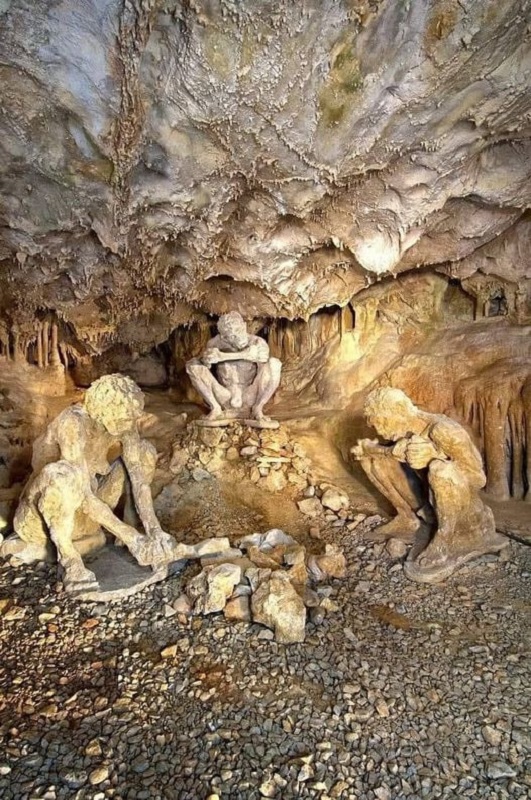In the rolling countryside of Wiltshire, England, rises the imposing form of Silbury Hill, the largest artificial prehistoric mound in Europe. Dating back to approximately 2470 BC, this massive chalk mound's origin and purpose continue to captivate archaeologists and historians alike.
The top image captures the majestic presence of Silbury Hill as it stands today, a testament to the enduring legacy of those who constructed it over 4,700 years ago. Surrounded by the verdant fields, the hill dominates the landscape, its purpose and meaning shrouded in mystery.

Below, an artist's rendering invites us to imagine the monumental effort required to create such a structure. It’s believed that Silbury Hill was constructed by a workforce of 500 men, laboring over an estimated 15 years to complete the project. This would have amounted to a staggering 4 million man-hours of labor, moving half a million tonnes of material to create the mound.
The construction process would have been an extraordinary feat of prehistoric engineering, requiring organization, cooperation, and perseverance. The material used—primarily chalk—was carefully layered and packed, a method that has ensured the mound's survival through millennia.

Archaeological studies and historical records have yet to unveil the mound's true purpose. Was it a burial site, a ceremonial platform, or a territorial marker? Or perhaps it served a function now entirely lost to the passage of time. What is clear, however, is that Silbury Hill was of great significance to the people who built it, and it remains an object of reverence and curiosity in the modern age.

Silbury Hill remains an enigma, a silent communicator from the past. Its sheer size and the scale of labor invested in its creation speak to its importance in the prehistoric landscape of Britain. As a monument, it challenges us to consider the capabilities and complexities of ancient societies and the lasting imprints they left on the earth.











